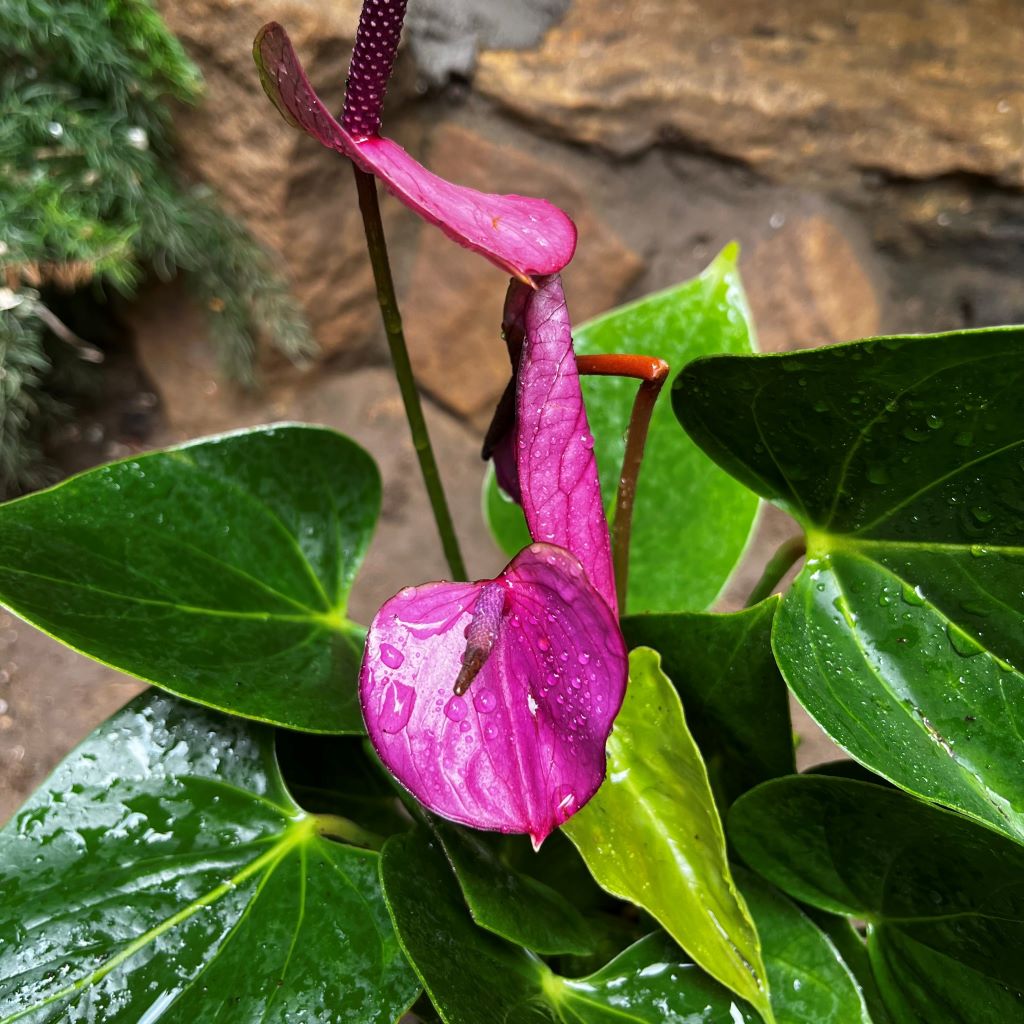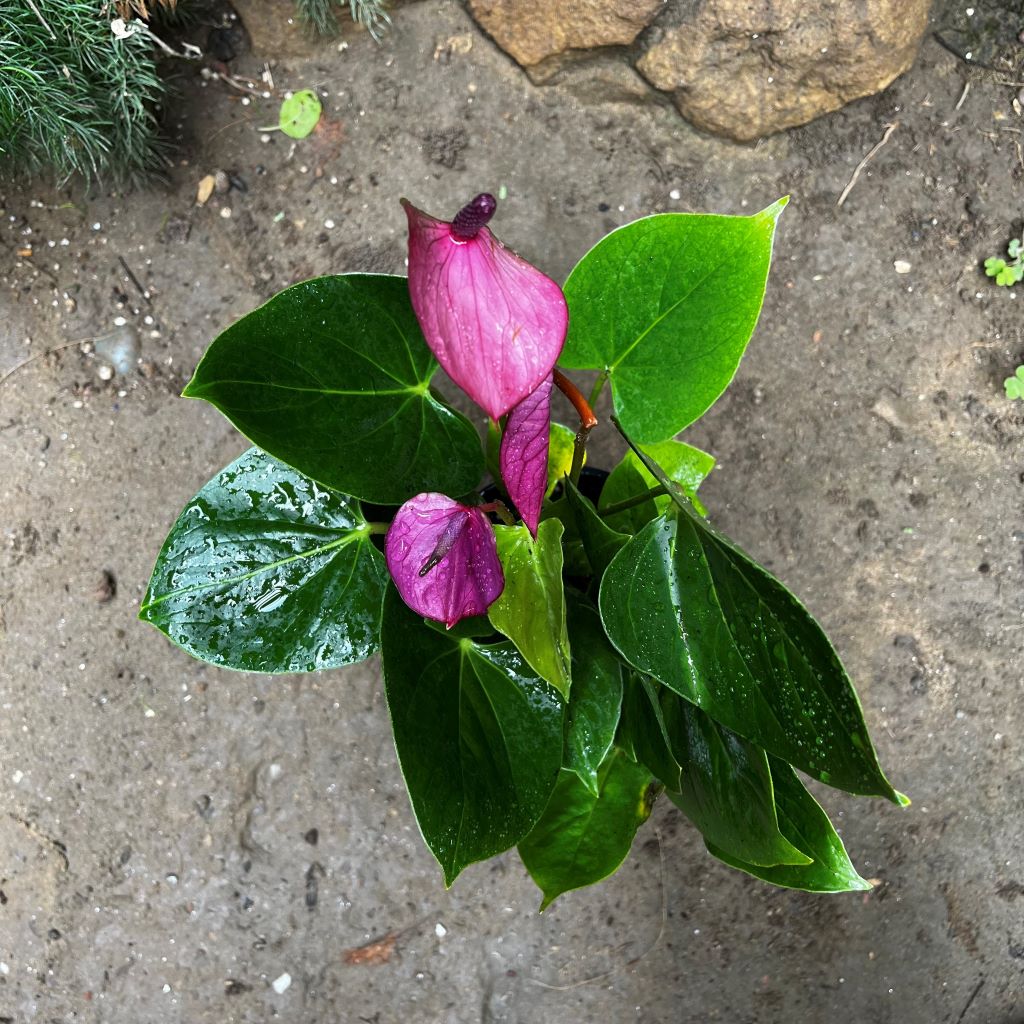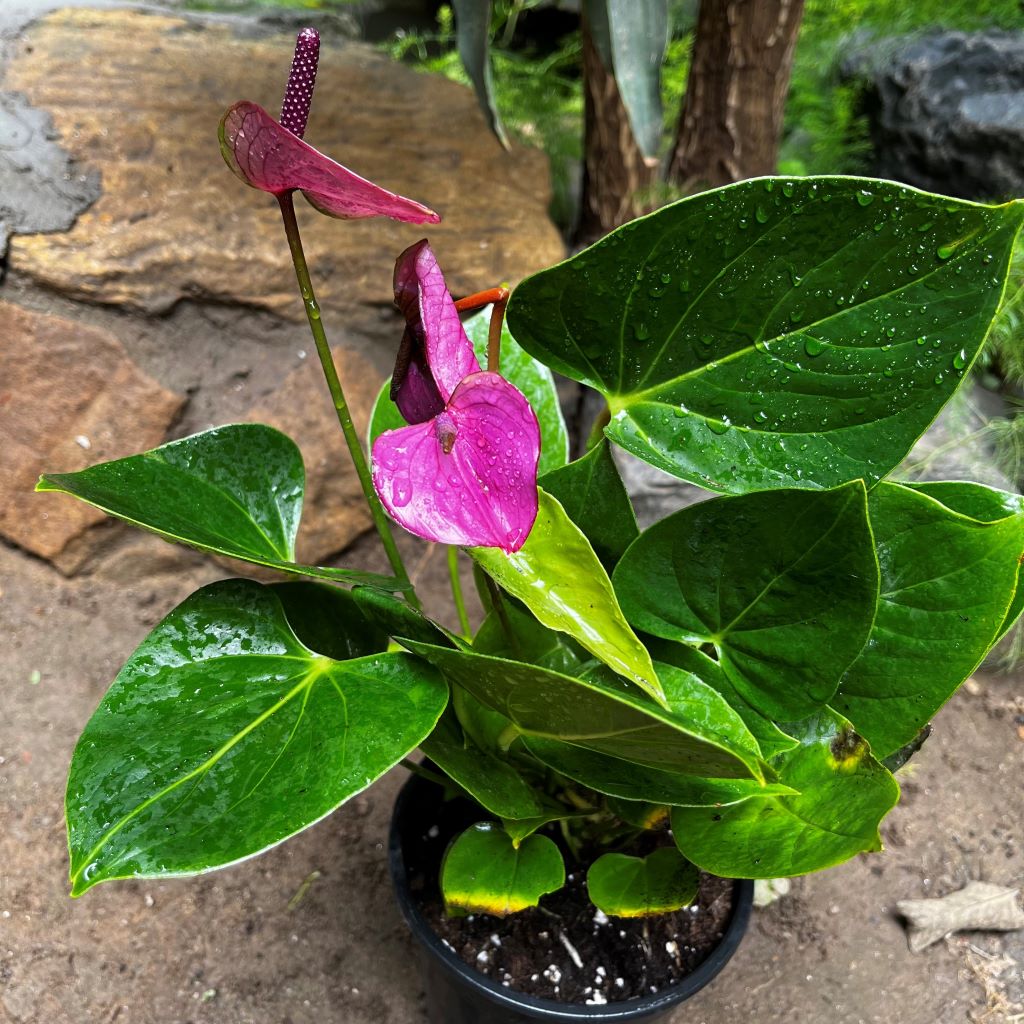Anthurium Baby Purple
Description
The Anthurium, also known as the Flamingo Flower, are evergreen perennials, usually epiphytic and sometimes climbing, with large, simple or palmately lobed leaves, and spike-like flowering spadices each subtended by a colourful flat spathe.The spathe and flower spike (spadix) can be red, white, cream, maroon or purple or a combination of these.
Anthurium Baby Purple is a spectacular tropical plant with evergreen plant, dark green glossy FLOWage and magenta-purple spoon-shaped flowers (spathes, a form of leaf) and dark purple flower spikes (spadix).
Origin: South America
Family: Araceae
Height: 40-50 cm
Light: Place peace lilies in a location where they get filtered light, such as a bright window. North or West facing windows are best as these do not allow direct sunlight all day. In too little light, the plants won t bloom properly. In harsh sunlight, they become bleached or dry.
Water: Keep evenly moist. Be sure to use a container with a drainage hole and never allow the plant to stand in water.
Humidity: Mist the leaves several times a week with a spray bottle. Mist your plant more frequently in the summer growing season- the more water you can supply the blooms, the healthier it will be.
Temperature: Growth may cease completely below 70 F, but will resume when warmer weather returns. In winter, anthurium plants need a 6 week rest period at a with little water. This allows the plant to flower profusely again in the following season.
Soil: Any good potting mix that drains well. Mix of potting soil and orchid soil or perlite will provide the kind of soil anthuriums prefer.
Fertilizer: During growing, fertilizer with slow-release fertilizer or use a 20-20-20 liquid fertilizer at half-strength every month. Iron deficiency can result in yellowing leaves between the veins treat with an iron drench.
Eliminates: Their large, dark leaves suck up ammonia, formaldehyde, toluene and xylene
Caution: Anthurium andraeanum is poisonous to both humans and animals. Care must be taken with small children and pets. If they ingest any part of this plant, they will immediately start to have difficulty swallowing, horseness and blistering in their mouth and throat.






















